Lithium battery manufacturers generally compose the electrolyte of lithium salt and an organic solvent.
Manufacturers generally prepare the electrolyte using high-purity organic solvent, electrolyte lithium salt, necessary additives, and other raw materials under specific conditions and in a certain proportion.
In this article, we introduce you to several typical lithium salts in lithium battery electrolyte.
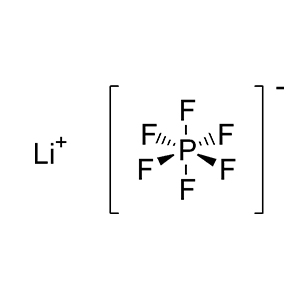
Lithium hexafluorophosphate, an inorganic compound, abbreviated as LiPF6, is a white crystalline powder, easily soluble in water, soluble in low concentrations of methanol, ethanol, acetone, carbonate esters and other organic solvents, with good ionic conductivity and electrochemical stability, in some solvents can be formed on the aluminum collector and graphite anode have a protective effect on the electrolyte interface, and thus can be used as lithium-ion battery electrolyte materials. At present,liFP6 has become the most important electrolyte lithium salt used in lithium-ion batteries.
LiFP6 is the most commonly used electrolyte lithium salt, and the cost of lithium salt accounts for about 50% of the cost of electrolyte.
High technical barriers have resulted in a relatively small number of liFP6 producers, and the competitive landscape of the industry is centralized and stable.
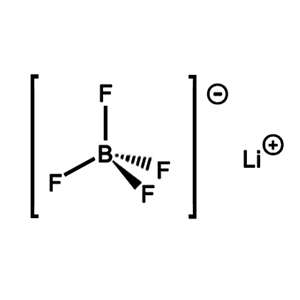
LiBF4 has a relatively small anionic radius (0.227 nm), which is easy to dissociate in organic solvents, thus contributing to the improvement of lithium battery conductivity and thus battery performance.
However, it is due to the relatively low conductivity of lithium ions that LiBF4 is also rarely used in room temperature lithium batteries.
On the other hand, LiBF4 has relatively high thermal stability and is not easy to decompose at high temperatures, so it is commonly used in high temperature lithium batteries.
At the same time, LiBF4 also shows good battery performance at low temperatures, which is mainly due to the fact that LiBF4-based electrolyte shows smaller interfacial impedance at low temperatures.
In addition, LiBF4 has a certain degree of corrosion resistance to the collector Al, therefore, LiBF4 is often used as an additive to the electrolyte of lithium-ion batteries, so as to improve the corrosion potential of the electrolyte to the collector Al.
In the case of new energy vehicles, mobile terminals, power tools, wireless home appliances and other markets continue to grow, the global production capacity has increased dramatically, and still maintains a rapid upward trend, lithium tetrafluoroborate, as a traditional lithium-ion battery electrolyte LiFP6 as an excellent alternative, the future development prospects are broad.
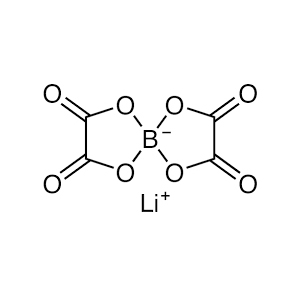
LiBOB has a molecular weight of 193.79, and its appearance is a yellowish or white powder. The boron atom in LiBOB is connected to the oxygen atom in oxalic acid root, which has a strong electron-absorbing ability, and the charge distribution is relatively decentralized, which makes its electrochemical stability better.
Compared with LiPF 6, LiBOB has a lower irreversible capacity in the first charge/discharge process.
The downstream of LiBOB industry chain is the application field, and lithium battery electrolyte is the biggest demand.
New lithium salts include LiBOB, lithium trifluoromethanesulfonimide and lithium bifluorosulfonimide.
LiBOB has the advantages of non-toxicity, non-pollution, good thermal stability, good electrochemical stability, etc., which can improve the high temperature performance of lithium batteries and electrolyte conductivity.
Some relevant industry analysts said, LiBOB has excellent performance, the future is expected to become an important raw material for lithium battery electrolyte.
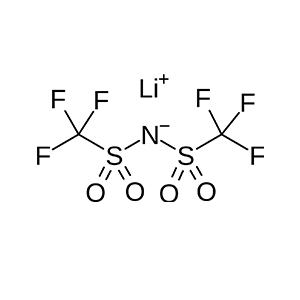
Among the new lithium-ion lithium salts studied so far, lithium bis(trifluoromethylsulfonyl)imide (LiTFSI) has a large anionic radius, which is easy to dissociate lithium ions, and thus the conductivity can be improved, and moreover, the product has good thermal stability.
However, LiTFSI can cause corrosion to the anode collector aluminum sheet at a potential of 3.7 V (Li+/Li), which in turn affects the application of this electrolyte in lithium-ion batteries.
Because of the production technology of LiTFSI and the cost and other reasons, the layout of the enterprise is relatively small, but because of its excellent performance as a new type of lithium salt, and at the same time, with the development of the international lithium battery market, the future market demand for LiTFSI will continue to increase.
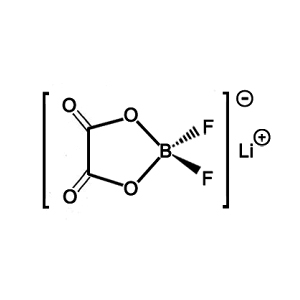
LiODFB has a molecular weight of 143.77 and the appearance of white crystalline powder.LiODFB is a new type of lithium salt that combines the structure of LiBF4 and LiBOB at the same time, so its performance has the high temperature performance of LiBOB and the low temperature performance of LiBF4.
It can be used in a wide range of temperatures, which can be used in contrast to the disadvantages of low electrical conductivity, increased impedance of the solid electrolyte phase interface (SEI) membrane and increased ion transfer impedance of LiPF6 in low-temperature environments.
interface (SEI) membrane impedance increases and ion transfer impedance increases and other shortcomings of LiPF6 at low temperatures.
At present, the research on LiODFB is still in the development stage, and there are still many key technical difficulties that require in-depth development and research.
However, it is believed that as the depth and breadth of the research continues to dig, the scale production of LiODFB will be realized, which will further promote the high-quality and healthy development of the new energy industry.
At present, the global lithium difluoro-oxalate borate production capacity is mainly concentrated in China, South Korea, Japan and other countries.
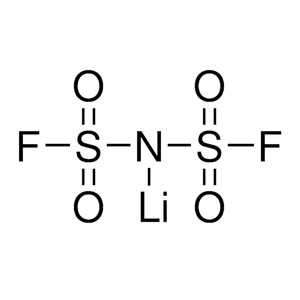
Lithium Bis(fluorosulfonyl)imide has a molecular weight of 181.141 and the appearance of colorless liquid.LiFSI has a high ionic conductivity, which can provide faster ionic transport speed, thus improving the charging and discharging performance and power density of the battery;
It has a wide electrochemical window and can work in a higher voltage range, improving the energy density and cycle stability of the battery;
It has good solubility in common organic solvents and can be fully mixed with solvents and other components in the electrolyte to improve the uniformity and stability of the electrolyte of the battery;
LiFSI has high thermal stability, can maintain the stability and safety of the battery under high temperature conditions, LiFSI melting point of 145 ° C, decomposition temperature is higher than 200 ° C.
Compared with the traditional lithium salt LiFP6, LiFSI has better overall performance.
Firstly, LiFSI has a larger anion radius, which makes it easier to dissociate lithium ions and improves the conductivity of the electrolyte;
Secondly, its decomposition temperature is higher than 200℃, which has better thermal stability and improves the high temperature resistance of electrolyte;
Then, it can improve the discharge charge performance in low temperature environment and maintain the capacity retention rate in high temperature environment, which can improve the high and low temperature performance of lithium batteries. Therefore, LiFSI can be used in electrolyte to improve the cycle life, multiplicity and safety of the battery, which is in line with the direction of the future development of lithium batteries.
The rapid development of new energy vehicles and electrolyte has driven the development of upstream lithium salt, and the continuous expansion of LiFSI production scale helps to reduce its production cost, so as to be better applied to lithium battery electrolyte.
Contact: Tony Li
Phone: +86-13263299644
Tel: +86-13263299644
Email: sales@ecoviaet.com
Add: No 3 Youyi Road,Tangshan,Huantai,Zibo,China
We chat
